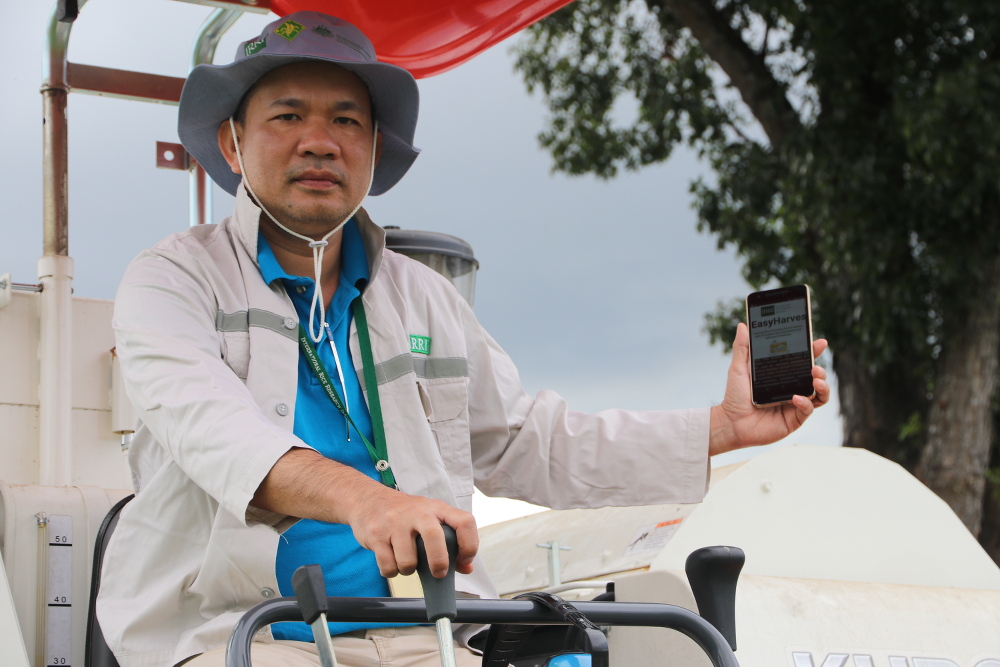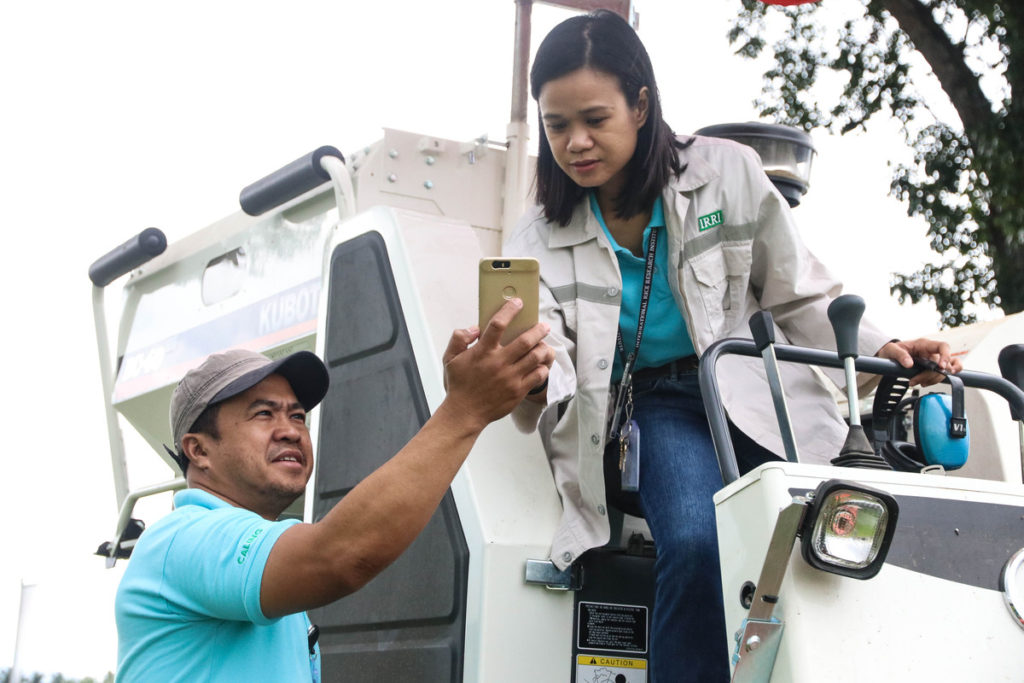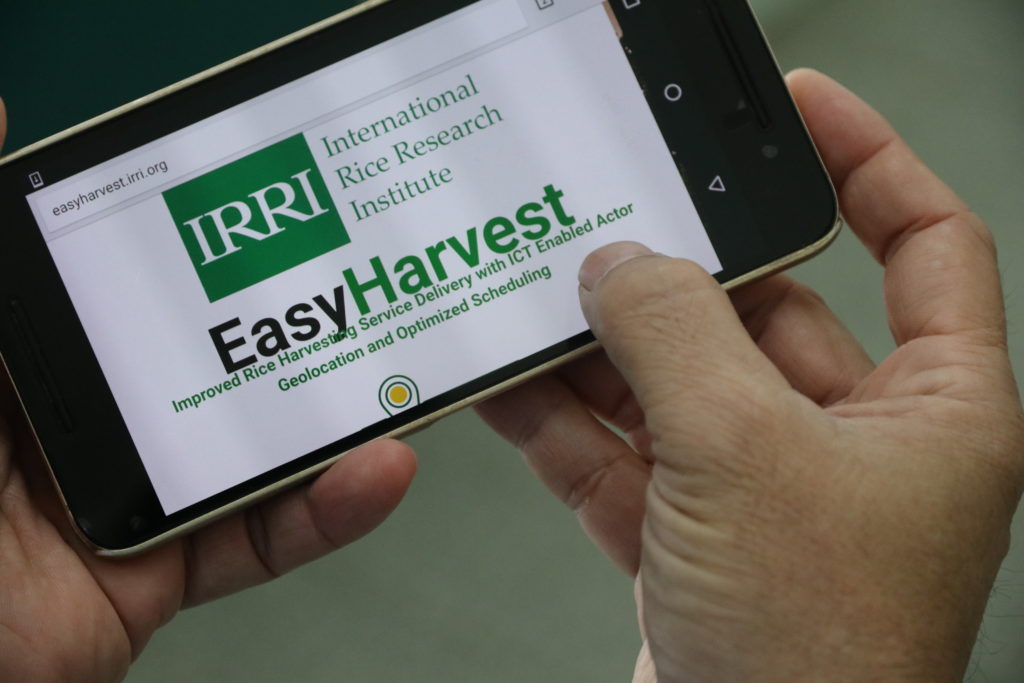Uber for tractors: a digital tool to cut rice losses
The EasyHarvest app in the Philippines is already cutting rice postharvest losses for farmers and reducing transport emissions.
This blog is an effort of the Data-Driven Agronomy Community of Practice to highlight CGIAR’s digital extension work.
Uber and other travel apps are ubiquitous with getting around in many countries. From the busy streets of New York to the rural suburbs of New Delhi, commuters rely on ride-hailing services for everything from getting to work to picking up packages.
The cost-cutting and fuel-saving aspects of such apps are starting to reverberate in other circles too. In agriculture, taking advantage of efficient digital tools, such as Easy Harvest – or an “Uber” for tractors and combine harvesters – is one example.
By matching farmers with harvest machinery closest to them at peak harvest times, EasyHarvest is already cutting rice postharvest losses and transport emissions.
A common peak harvest problem
“Most rice farmers face the same problem at harvest time,” explains Nguyen Van Hung, a scientist at the International Rice Research Institute in the Philippines. “They usually do not have enough funds to buy their own harvesting machinery, so they must hire it, which makes organized scheduling a challenge when many farmers in a region are harvesting at the same time.
“Poor communication among farmers and lending services can result in an early or late harvest, which causes grain losses and lower farmers’ incomes,” he notes.
Benefits just a few clicks away
In the Philippines and Indonesia, digital tools and sensors have been embraced by a growing number of farmers as a way for them to obtain real-time information. They are already accessing SMS banking, climate forecasting, and other agricultural information from the cloud.
Drones linked to satellite image processing are already being used by farmers to make adjustments for more efficient fertilizer and pesticide applications. And what started as an idea to connect farmers with agricultural machinery for harvesting their rice crop is slowly becoming a reality.
“Many farmers have smart phones, especially younger ones, to book a combine harvester or tractor with just a few clicks,” says Hung. “They can also evaluate the cost, the brand of the machine and where it will come from, and whether or not a five- or four- star service can be expected.”
EasyHarvest is currently running 14 harvesting machines in trials and farm experiments in the Philippines. Farmers can book machinery while a ‘smart recommendation’ tool matches conditions on the farm with specific machines, anticipating very busy periods.
The tool can be used to help farmers share information about their field and estimated harvesting date or between service providers, sharing real-time harvesting schedules geo-located on a map, so they can keep track of assets.
Algorithms become “smarter” as more data parameters are entered, offering more precise information about field conditions, harvesting dates, and available infrastructure.
Long-term outlook
So far, research reveals a potential of a 10% reduction in harvest costs and a 5% cut in carbon emissions thanks to more efficient transportation. Postharvest losses that occur during harvesting, costing some US$3 billion annually in Asia, are reduced by 2% because farmers are matched with the right machines at the right times.
“EasyHarvest is in the very early testing stages and funding for long-term development will be tricky,” Hung points out.
“It is still difficult to find investors willing to take a risk with this kind of early-stage research and testing in agricultural extension. The private sector often wants to see results fast, but this research will take time.
“We need to find ways to make this more attractive for investors, with all the risk that this might assume, for long-term development, and find funding to extend this kind of service to more farmers.”
If successful, this kind of digital extension tool can be used for harvesting other crops such as corn, maize, and sugarcane and extended to other farm machinery such as straw balers and laser-controlled land levellers.
The beta version of EasyHarvest is already accessible as a web application at http://easyharvest.irri.org. Soon, it will also be available at the Google Play Store.
Photo credits: IRRI
February 20, 2020
Georgina Smith
Nairobi Kenya
Latest news







